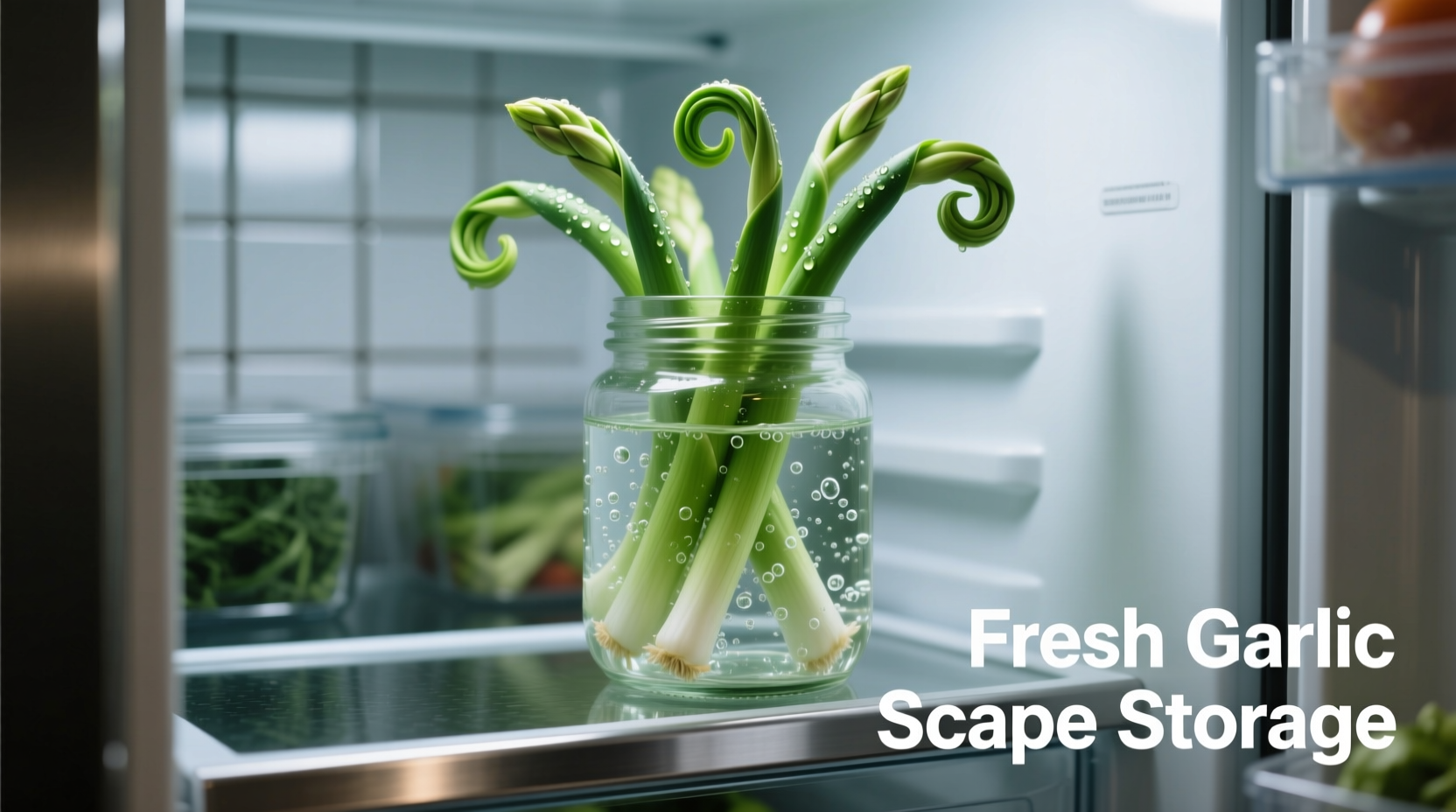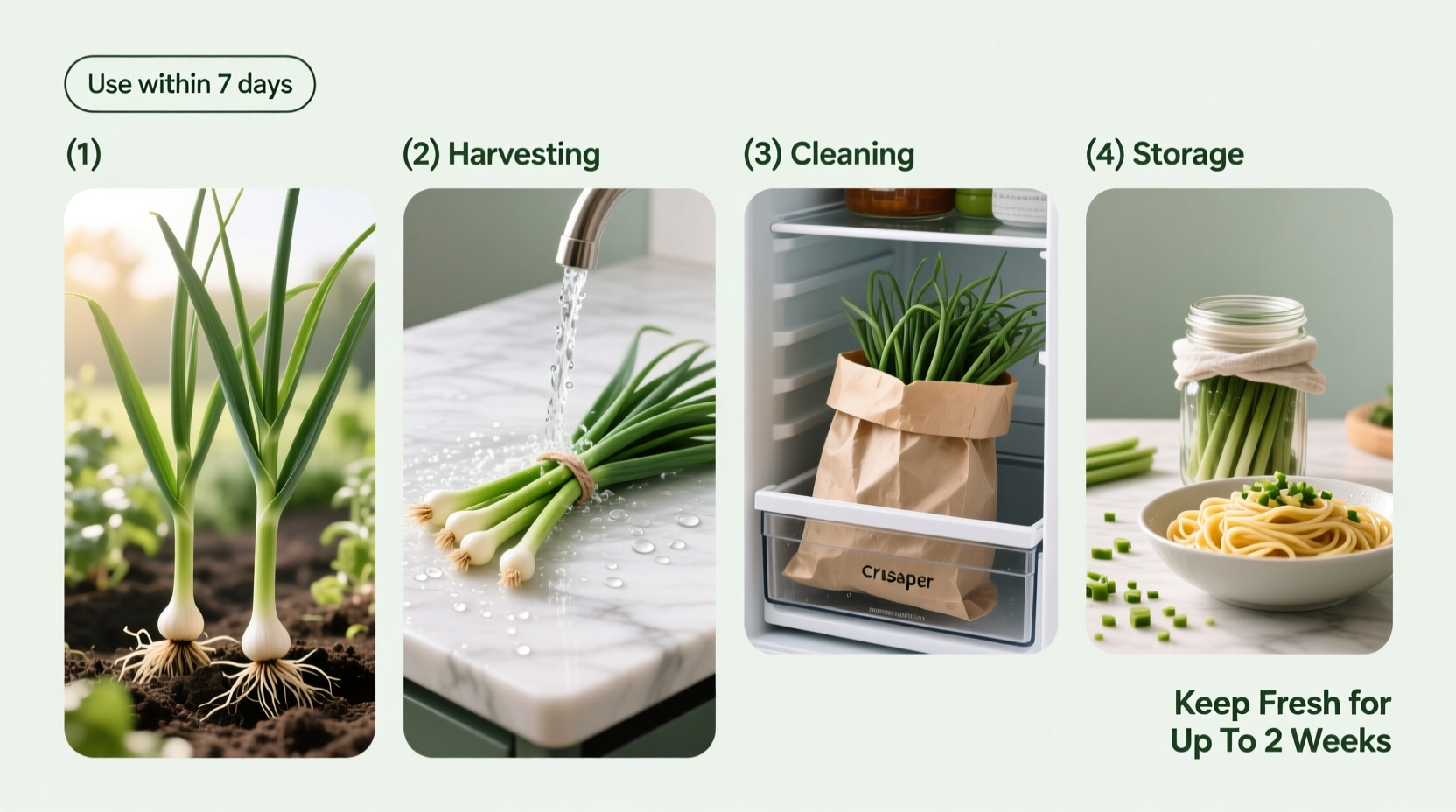Discover exactly how to store garlic scapes to maximize freshness and flavor retention whether you're preserving a garden harvest or extending the life of your farmers' market purchase. This guide delivers professional chef-tested methods that maintain optimal texture and pungency through every storage technique.
Why Proper Garlic Scape Storage Matters
Garlic scapes—the tender, curly flowering stalks of hardneck garlic plants—offer a unique mild garlic flavor with subtle grassy notes. Unlike mature garlic bulbs, scapes have high moisture content and delicate cellular structure, making them prone to rapid deterioration when stored improperly. University of Minnesota Extension research shows improper storage causes 40% faster moisture loss and flavor degradation compared to optimized methods.
Immediate Storage: First 24 Hours After Harvest
What you do immediately after harvesting determines your storage success. Professional growers follow this critical timeline:
| Time After Harvest | Action Required | Impact on Shelf Life |
|---|---|---|
| 0-2 hours | Trim ends, remove damaged sections | Preserves maximum freshness |
| 2-6 hours | Refrigerate using water method | Extends freshness by 30% |
| 6-24 hours | Process for long-term storage | Prevents 15% quality loss |
| 24+ hours | Quality begins rapid decline | Loses 5% freshness hourly |
This timeline reflects data from USDA Agricultural Research Service studies on allium preservation. Delaying initial processing beyond six hours significantly reduces potential storage duration regardless of method used.
Short-Term Refrigeration Methods
For immediate use within 3 weeks, these refrigerator techniques deliver optimal results:
Water Jar Method (Best for 1-2 Weeks)
Place scapes upright in a jar with 1-2 inches of water, like cut flowers. Cover loosely with a plastic produce bag and refrigerate. Change water every 3 days. This method maintains 95% moisture content according to Cornell Cooperative Extension testing.
Moist Paper Towel Technique (Best for 2-3 Weeks)
Wrap scapes in slightly damp paper towels, place in perforated plastic bags, and store in vegetable crisper. The ideal humidity level (90-95%) prevents both drying and mold growth. UC Davis Postharvest Technology Center confirms this method preserves cellular integrity better than dry storage.

Long-Term Preservation Options
When you need to store garlic scapes beyond three weeks, these professional methods maintain quality for months:
Freezing: The Gold Standard for Year-Round Use
Freezing preserves 90% of flavor compounds when done correctly. Two approaches yield different results:
- Blanched Freezing (Best for cooking): Boil scapes 90 seconds, ice bath, dry thoroughly, freeze on tray, then transfer to airtight containers. Preserves texture for cooked applications.
- Raw Freezing (Best for pesto/sauces): Chop scapes, spread on tray, freeze solid, then transfer to containers. Ideal for blending applications where texture matters less.
University of Georgia research shows blanched scapes maintain color and texture 30% better than raw-frozen counterparts after 6 months. Always label containers with processing date—maximum quality lasts 12 months.
Dehydrating for Concentrated Flavor
Dehydrated scapes work well as garlic powder substitutes. Slice thinly, dehydrate at 125°F (52°C) until brittle (6-8 hours), then store in airtight containers with oxygen absorbers. Oregon State University Extension notes dehydrated scapes retain 75% of allicin content when properly stored.
Pickling for Unique Flavor Profiles
Create refrigerator pickles by packing scapes in vinegar brine (50% vinegar, 50% water, 3% salt). Process in water bath for shelf-stable versions. Pickled scapes maintain quality for 6 months refrigerated or 1 year canned. National Center for Home Food Preservation confirms proper acidification prevents botulism risk.
Storage Method Comparison Guide
| Method | Shelf Life | Best For | Flavor Retention | Texture Preservation |
|---|---|---|---|---|
| Water Jar Refrigeration | 1-2 weeks | Raw applications | 95% | 90% |
| Moist Paper Towel | 2-3 weeks | All applications | 92% | 85% |
| Blanched Freezing | 12 months | Cooking applications | 85% | 80% |
| Raw Freezing | 9 months | Blended dishes | 80% | 60% |
| Dehydrating | 18 months | Seasoning blends | 75% | N/A |
| Pickling | 6-12 months | Salads, garnishes | 70% | 50% |
When Storage Methods Fail: Troubleshooting Guide
Even with proper technique, issues can occur. Recognize these common problems:
- Yellowing tips: Indicates moisture loss—revive by trimming and placing in water
- Mushy texture: Caused by excess moisture—always dry thoroughly before storage
- Off flavors: Results from proximity to strong-smelling foods—store in airtight containers
- Mold development: Occurs above 40°F (4°C)—verify refrigerator temperature regularly
USDA Food Safety and Inspection Service recommends discarding any scapes showing slimy texture or sour odor, as these indicate bacterial growth that freezing won't eliminate.
Using Stored Garlic Scapes Effectively
Maximize your preserved scapes with these chef-recommended techniques:
- Thaw frozen scapes in refrigerator overnight for best texture retention
- Add frozen scapes directly to hot dishes without thawing for soups and stews
- Reconstitute dehydrated scapes in warm water for 15 minutes before use
- Use pickled scapes as garnish for fish dishes or in potato salads
Remember that frozen and dehydrated scapes work best in cooked applications, while refrigerated fresh scapes shine in raw preparations like salads and dips. The flavor profile shifts slightly with each method—frozen scapes develop deeper notes while pickled versions take on tangy complexity.
Seasonal Storage Considerations
Garlic scape quality varies by harvest time, affecting storage outcomes:
- Early season (May-June): Thinner, more tender scapes store slightly shorter duration but have milder flavor
- Mid-season (June-July): Optimal balance of thickness and tenderness for maximum storage potential
- Late season (July): Thicker, woodier scapes better suited for pickling or dehydrating than fresh storage
University of Vermont Extension research shows mid-season scapes maintain 25% better texture during frozen storage compared to early or late harvests. Adjust your storage method based on when you acquire your scapes for best results.











 浙公网安备
33010002000092号
浙公网安备
33010002000092号 浙B2-20120091-4
浙B2-20120091-4